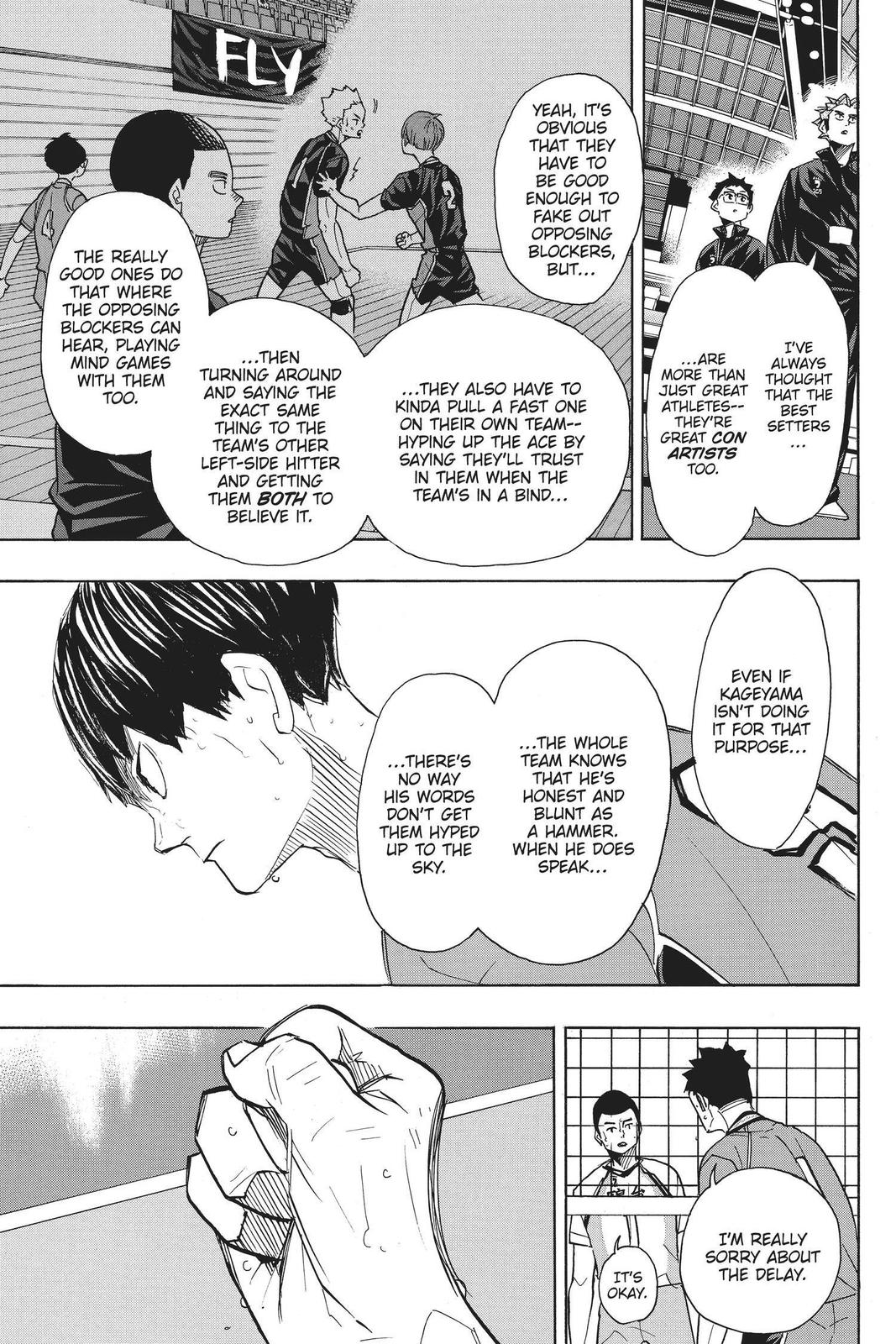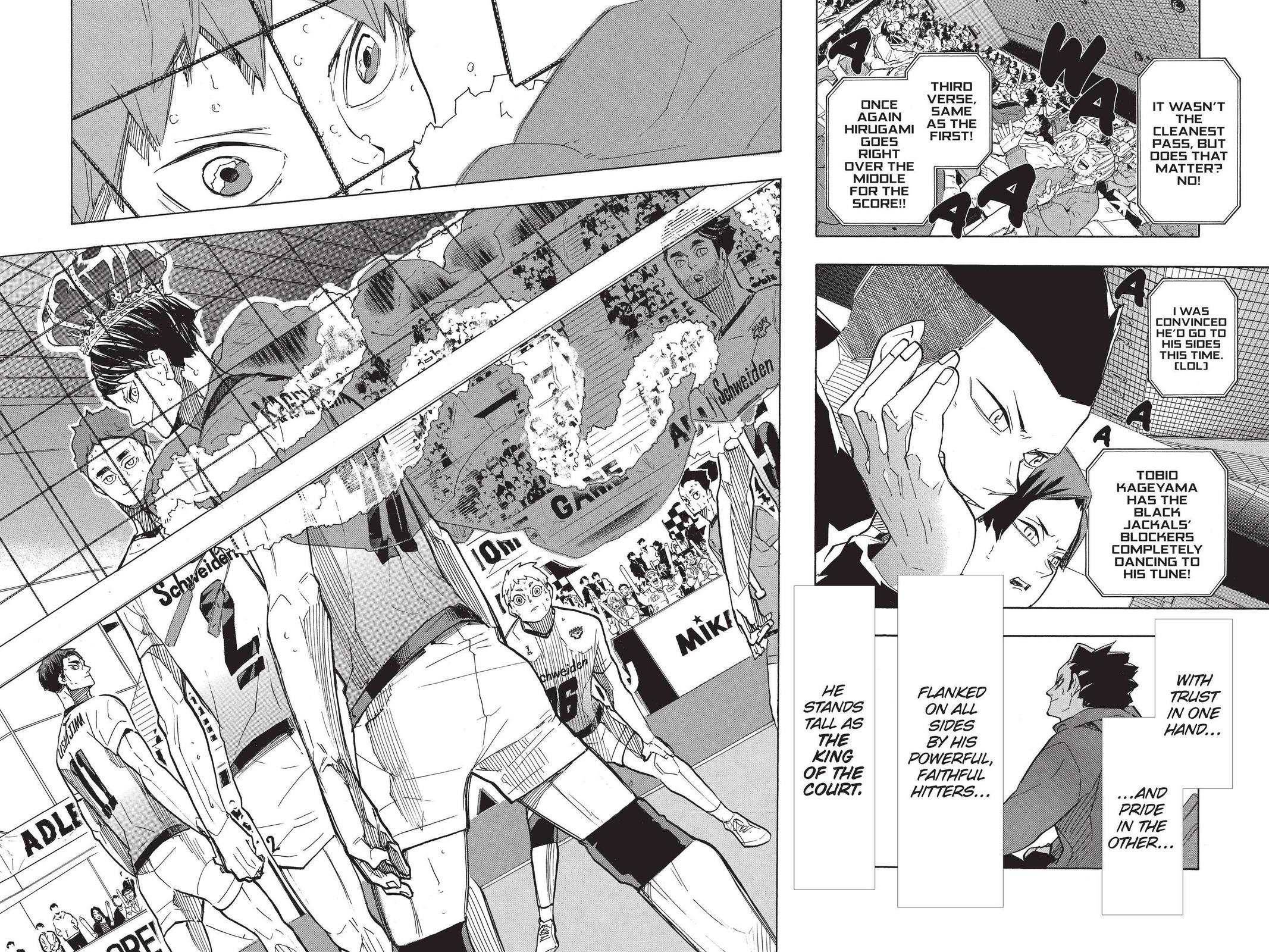Interestingly, this isn’t the first time Ukai has openly praised an opposing setter. During the Aoba Johsai match, he compares Oikawa to a maestro, guiding his team with skill and charm. Yet, despite Kageyama’s undeniable talent as one of the best setters in the game, Ukai’s praise for him is more reserved. This raises a big question: Why does Ukai, who coaches players like Kageyama and Sugawara, seem to give higher praise to other setters? Do his own players lack something that Oikawa or Atsumu have?
To answer this, we must delve into Ukai’s own history as a setter. As a high school player at Karasuno, Ukai believed an ideal setter should be a “con artist”—someone who could manipulate opponents through clever plays and uplift their team with encouraging words. This belief, shaped by his experiences on the bench watching a more vocal setter take his place, influenced how he evaluated setters as a coach.
Players like Oikawa, Atsumu, and Sugawara exude charisma, making it easy for them to inspire their teams with words and actions. Oikawa, with his smooth manipulation of both teammates and opponents, stands as the epitome of Ukai's ideal setter. Atsumu, similarly, thrives on his ability to communicate with his team and opponents alike, weaving his way through playful mind games and sharp words. Sugawara’s soft-spoken nature belies his ability to bring the team together, offering support through his trust in their abilities. This communication style, especially the ability to play mental games or rally teammates with their words, naturally earns Ukai’s admiration.
But then comes Kageyama—an introverted, blunt prodigy whose communication style seems at odds with Ukai’s ideal. Kageyama is technically brilliant, yet his inability to express his leadership with the same fluidity as Oikawa or Atsumu leaves Ukai’s admiration for him largely unspoken. Ukai’s belief that a setter should also be a communicator, someone who can easily support and motivate, contrasts Kageyama’s quiet, straightforward approach. For much of the series, it seems Kageyama’s personality disqualifies him from being Ukai’s “ideal setter.”
This all starts to change during the Kamomedai match. Kageyama begins to encourage his teammates in his own way. His words may not be as flashy as Oikawa’s or Atsumu’s, but they’re sincere, and they have an impact. In that moment, Ukai starts to realize something important: Leadership doesn’t look the same for everyone. Kageyama doesn’t need to play mental games or deliver grand speeches to lead his team. His leadership comes through his actions—his precise, flawless, trusting, and threatening sets that play to his teammates' strengths. This marks a turning point for Ukai, helping him see that being a great setter doesn’t mean fitting into a single mold. Kageyama’s quieter, yet equally powerful, form of leadership is just as valuable.
This realization deepens after the time skip. By the time the Adlers face MSBY, Ukai sees the full extent of Kageyama’s growth. Kageyama is no longer the angry, isolated player he once was in middle school. He has learned to blend his technical brilliance with a strong bond of trust with his teammates. Kageyama has become “The King of the Court,” not because of his charm or smooth words, but because he has built his ruling through hard work, consistency, and the unwavering trust of those around him.
Coach Ukai’s journey teaches us that greatness isn’t confined to a single ideal. Kageyama’s growth, from the blunt, introverted setter to a powerful, respected King, shows us that leadership can take many forms. Ukai’s shift in perspective—from valuing only charismatic, extroverted setters to appreciating the quieter yet equally powerful leadership of Kageyama—reminds us that success comes in many shapes and sizes, and true greatness lies in understanding and appreciating these differences.



No comments:
Post a Comment